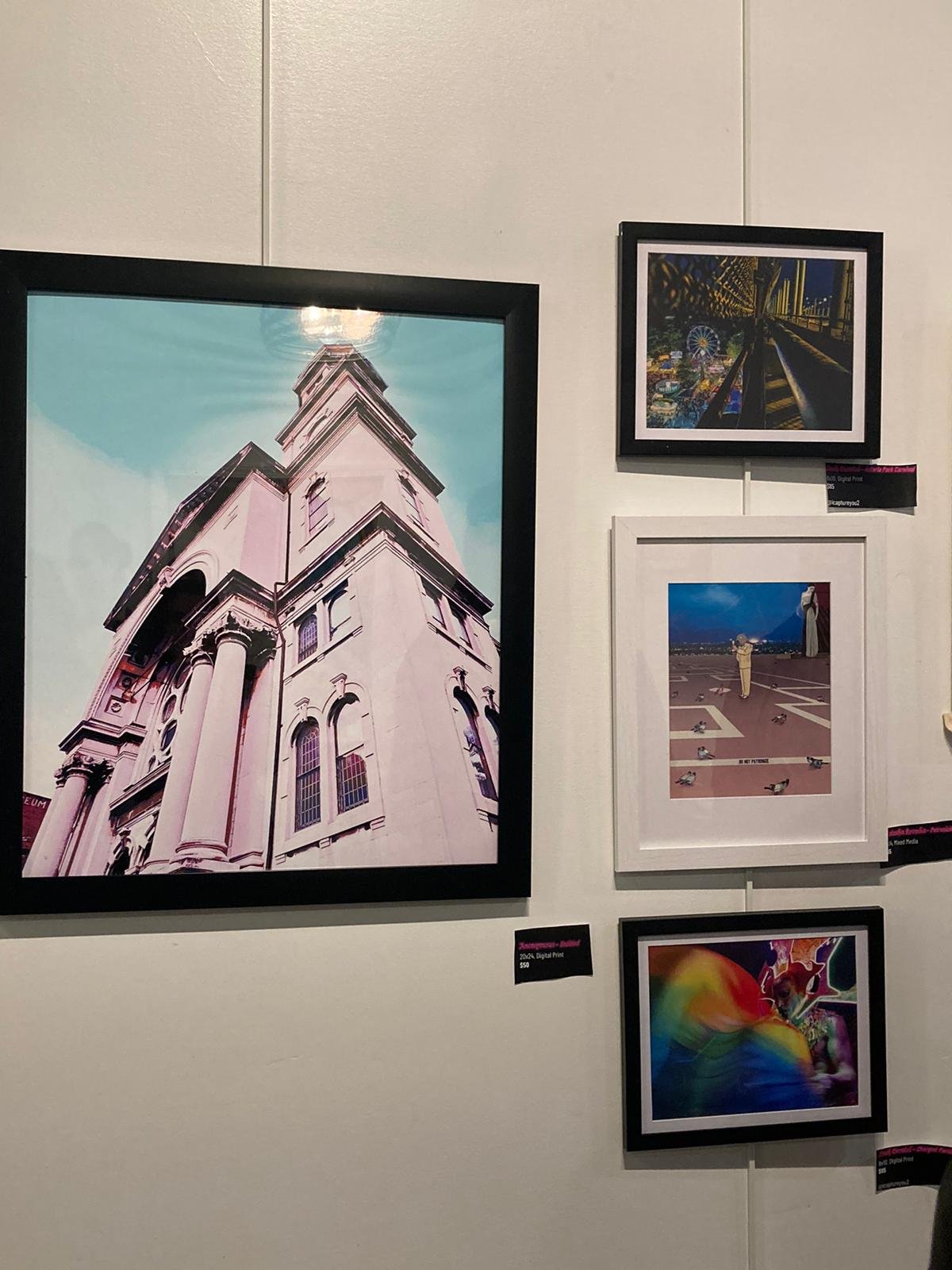Neon Gothic - Eerie, Provocative, and fantastical works of art
It set in for me that Neon Gothic was really happening when I saw the writing on the cake. I ordered a burnt almond torte from Prantl’s Bakery, a classic Pittsburgh food since I figured you only get to celebrate curating your first art show once and it would be good to give a nod to the local community. The woman at the bakery looked me up and down and asked if I wanted her to write on it for two dollars more. I hesitated at first and then found myself spelling N-E-O-N G-O-T-H-I-C to write on top of the frosting and almonds in pink fondant.
The cake was just the beginning. I decked out the gallery space with fake flowers and multi-colored electric candles. Ketchup City Creative, the show’s venue, is not just an art space but a community center. I’ve written at length about the mill town of Sharpsburg, home to Ketchup City Creative, Atithi Studios, Zynka Gallery and its thriving artistic community. But actually curating a show in Sharpsburg highlighted to me the ways in which curation is not just a vanity project. It’s the creation of a space, albeit a short-lived one, for people’s most precious works of art to live in.
I found myself fascinated by looking at photos of the show after the fact as a sort of Renaissance tableau of body language. In this photo, the gentleman in the center in the flannel shirt, photographer David Grim of Rust Belt Magic, has just realized that multimedia artist and “modern mystic” Alex Lecce was one of his former students at Seneca Valley High School.
Several of the artists within Neon Gothic were showing their work for the first time. Among them were Evelynn Maysonet, whose neon-inspired portraits about identity and femininity stuck out to me immediately, Ian Mrjdenovich, whose dark fantasy inspired “fallen angels” are part of a much larger fictional universe, and Aletheia, whose mixed-media paintings use a ‘90s anime and Harajuku culture aesthetic to bring viewers into a lush, textured alternate reality. One of my biggest goals with Neon Gothic was to make those people feel special.
During the pandemic, I didn’t have a college graduation, which felt like a blanket metaphor for my complete alienation from the world. My truncated educational experience left me feeling inadequate—I finished early for financial reasons and on top of that only celebrated it drinking wine in my living room—and on a personal level, Neon Gothic was a healing moment for me to finally feel like a part of something.
An art show is sort of like a custom-made cake—it can only exist in a pure, untouched form as long as nobody takes any pieces off to eat it. But if we didn’t cut into it and render it messy and illegible, nobody would get to enjoy it.
Emma Riva is the author of Night Shift in Tamaqua Managing Editor of UP Magazine.
Find out more about here @emmawithglasses and website, emmawithglasses.com








